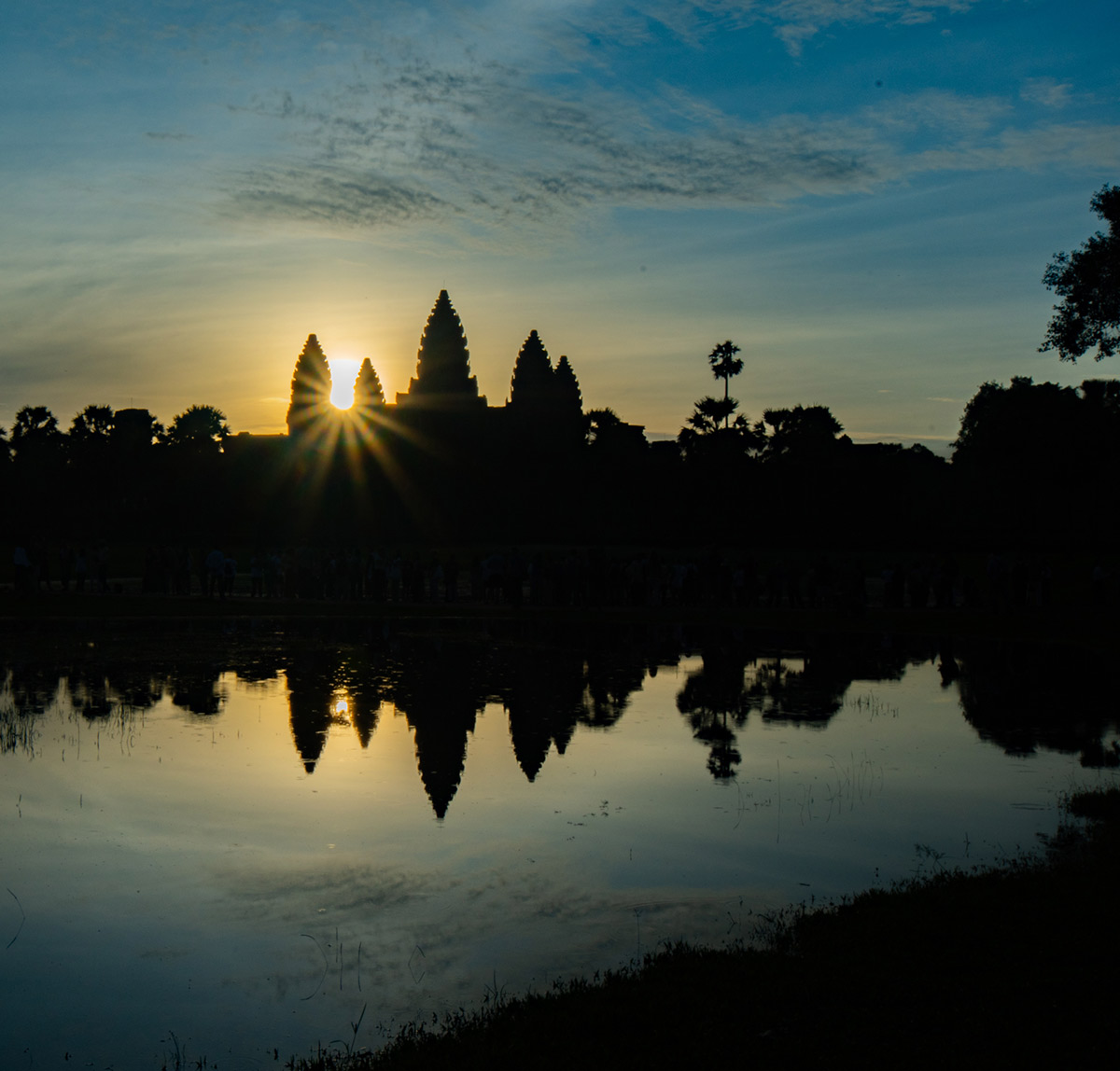It’s that time again: At 4pm on 14 April (Cambodian time) – the 2566 BE in the Buddhist calendar – angel Kemira Tevi (the Friday Angel) arrives on earth to protect the people. His arrival marks the beginning of the Cambodian New Year. Kemira Tevi is the sixth daughter of Kabil Moha Prom. For her arrival, Cambodians have cleaned and decorated their houses. With a gift table full of presents, the Khmers welcome the angel Kemira Tevi.
The appearance of the angel marks the beginning of Moha Songkran, the first day of the three-day New Year festival in Cambodia. This year there is another extraordinary feature: a world record with countless origami hearts around Angkor Wat.
A world record with origami hearts to start with
Cambodia has made it into the Guinness Book of World Records with a staggering 3,917,805 million origami hearts made of paper. In 2019, there was already a world record in the UK with 53,704 origami hearts. The photo on the left shows a giant heart. On the right is ខ្មែរ, the word “Khmer” in Cambodian.
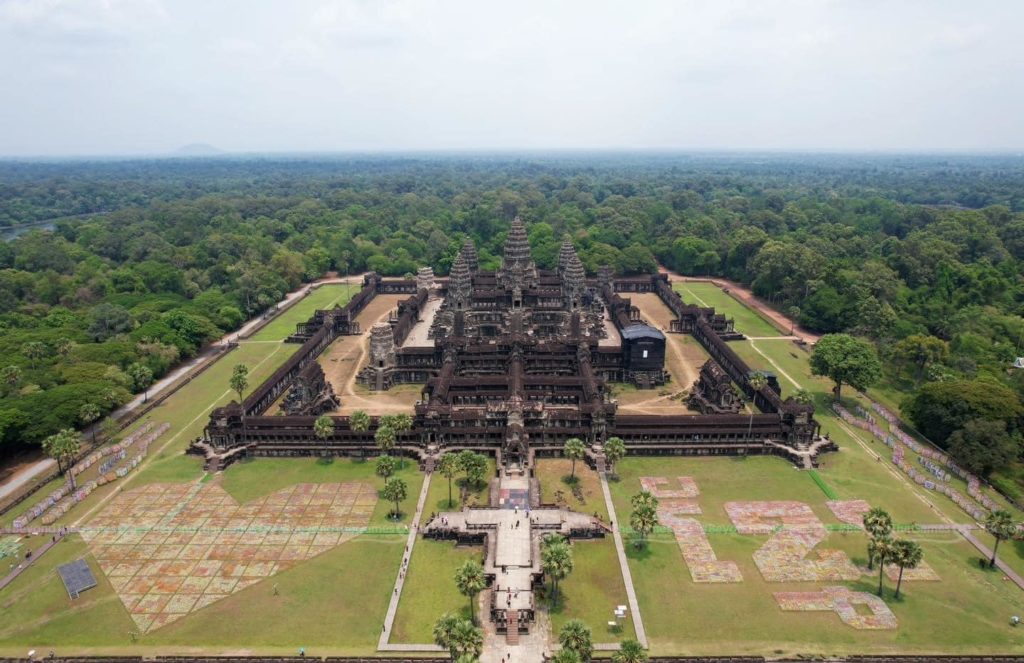
An ocean of paper flowers, all counted for the world record.
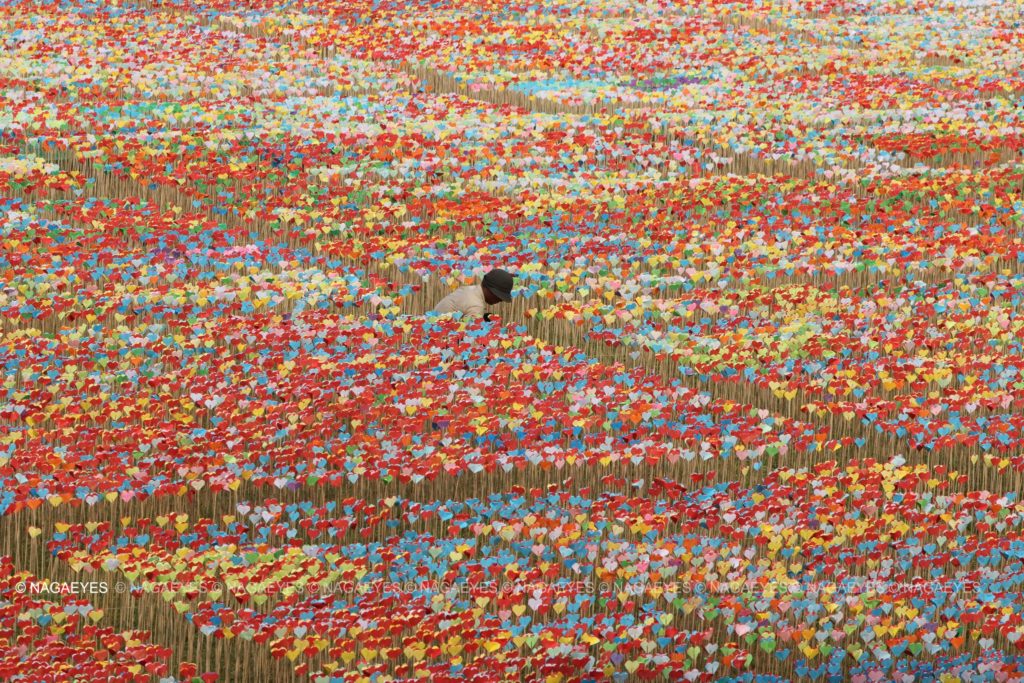
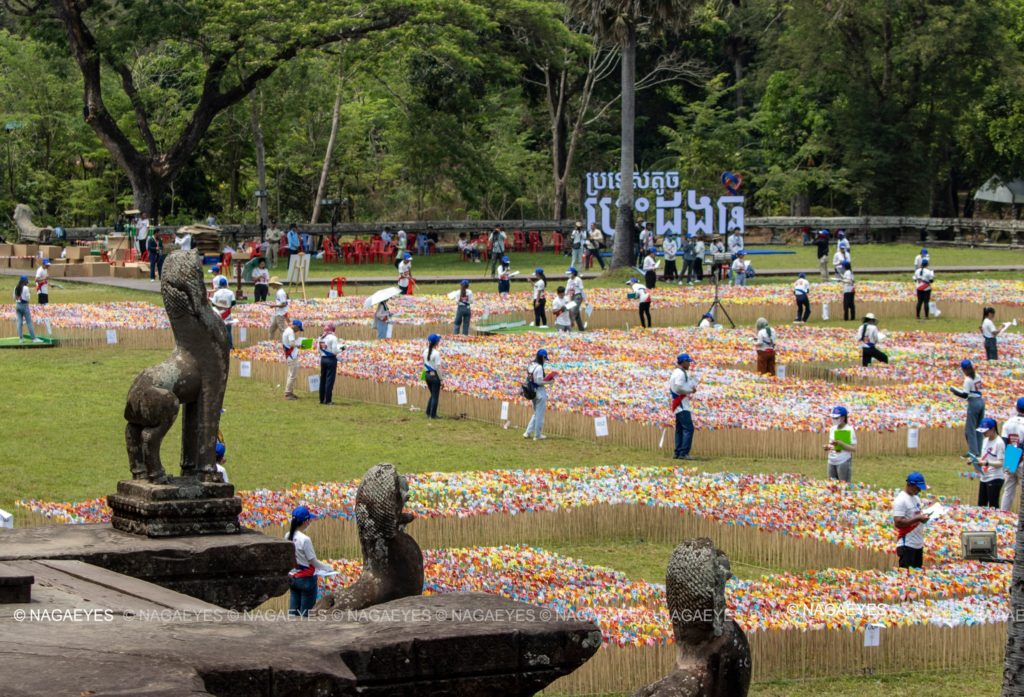
On the afternoon of 11 April 2023, the Guinness Book of Records officially announced that Cambodia had broken the world record. It was not just about the world record. The hearts were meant to symbolise the heart of the Cambodian people.
By the way: The stunning cover photo with a light show over Angkor Wat is by Ryratanak Sombath.
EAC News reports that Hun Many, President of the Union of Youth Federations of Cambodia (UYFC), has stated that the paper hearts are not only to break a world record, but also to reflect the heart of the Cambodian people and support athletes with disabilities who will participate in the upcoming SEA Games-ASEAN Para Games 2023. This impressive heartfelt event was organised to support Cambodian athletes and demonstrate a sense of national pride as the Kingdom prepares to host the SEA Games and ASEAN Para Games for the first time in its history.
Volunteers across Cambodia have already begun folding hearts in September 2022. Khmer people aged 4 – 85 years have participated.
But now back to the angel and more exciting information about the Cambodian New Year.
Gifts to welcome the angel
Angel Kemira Tevi holds a sword in her right hand and a mandolin in her left. She wears a hairpin with purple flowers (similar to the lotus flower) and precious gems around her neck. She rides the water buffalo and her favourite fruit is bananas.
Depending on the region and tradition in the families and communities, the decoration varies. Typical is:
- A statue or picture of Buddha
- 5 incense sticks and 5 candles
- Two young and decorated banana trees
- 3 kinds of fruit, each distributed in two bowls
- Braided borders of jasmine flowers, which are placed on all gifts
- And the special gift for angel Kemira Tevi, her favourite fruit: Bananas
Dazu dekorieren die Khmer je nach persönlicher Vorliebe noch viele andere Dinge wie Süßes, Cola, Kekse, Milch und mehr.
The origin of the Cambodian New Year angel
According to legend, Cambodians believe that every year an angel comes to earth to protect them. There is a different angel for each day of the week – they are all daughters of Kabil Moha Prom. So it depends on which day of the week the New Year begins and which angel comes to earth each time. In the Moha Sangkran, the uniqueness of the New Year angels is documented.
- Each angel has a preference for a different food
- Each angel rides to earth on a different animal
- Each angel carries certain objects in his left and right hand
- Each angel has a different hair ornament
So the gifts are a little different every year. Special emphasis is placed on the angel’s favourite food. For example, bananas may become more expensive because demand increases many times over during the preparations for the Cambodian New Year.
In total, Cambodians celebrate the beginning of the new year for three days. All three days are official holidays in Cambodia. These three days are particularly important; it depends on them whether the new year will bring success, peace and happiness.
Susdei Chnam Thmei – the Cambodian New Year around the world
Cambodians also celebrate the New Year in other countries. This photo with the gift table for angel Kemira Tevi was sent to me by Boromey – she lives in Germany and celebrates according to Cambodian tradition.
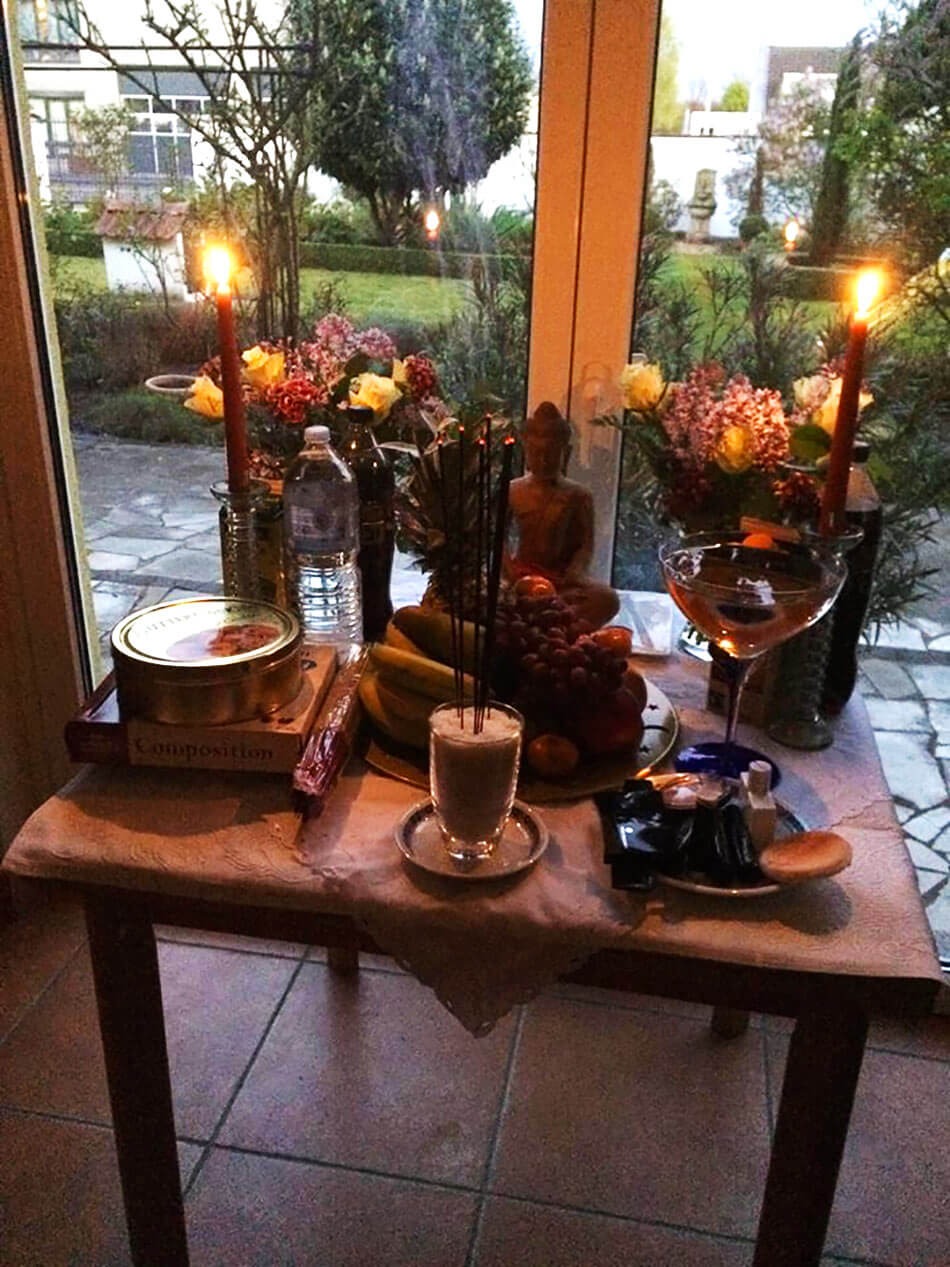
Cambodian New Year customs
One of the customs is that Cambodians build a sand mound in the temples and pagodas. The mound is pointed in the middle (sometimes a dome) and represents the Valuka Chaitya, the stupa in Tavatimsa (One of the gods’ worlds adjacent to the human world) – the place where Buddha’s hair and tiara are buried. The large stupa is surrounded by four small ones – these represent Buddha’s beloved disciples: Sariputta, Moggallana, Ananda and Maha Kassapa.
Another tradition is “Sraung Preah”. Here, younger Cambodians pour water or liquid plaster (a lot of water and some chalk powder) on their older relatives or on the older people in the village in general.
Furthermore, the Cambodian New Year is also a time to prepare special dishes. One of them is a “Kralan”: a cake made of steamed rice mixed with beans or peas, grated coconut and coconut milk. The mixture is stuffed into a bamboo stick and slowly roasted. Based on this custom, in 2015 there was a giant rice mountain rolled up in banana leaves as part of the Angkor Sankran – organised by the Union of Youth Federations of Cambodia (UYFC). It weighed 4,040 kg. Here is a short video of Prime Minister Hun Sen opening the ceremony.
Varied New Year programme in Siem Reap and Angkor Park
A lively programme is taking place in Angkor Park and Siem Reap, the Angkor Sankranta, which is celebrating its 10th anniversary. Highlights from the programme:
- Angkor Wat: Food Village of Love, Angkor Smile Garden, Master Artist, Dances. In the new park in front of Angkor Wat there is a “Selfie of Angkor Sankranta” contest.
- Angkor Thom: My Village, SEA (South East Asia) Games and Paralympic 2023 Village, exhibition of large objects, martial arts performances, classical theatre, world record attempt “The Biggest Madison Dance”.
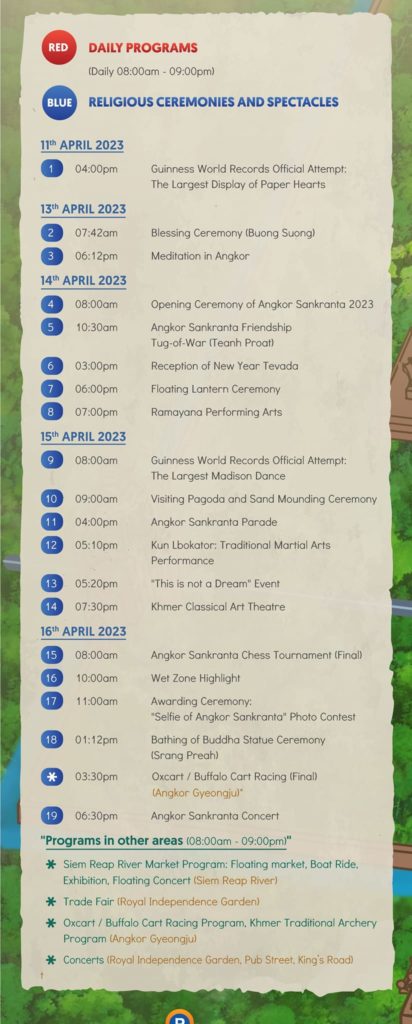
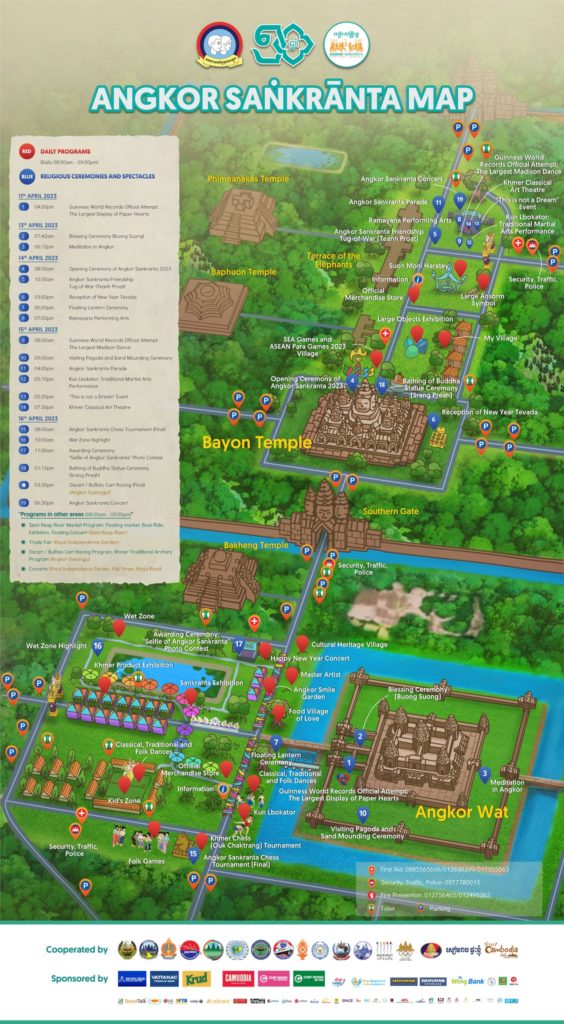
The most meaningful are the religious ceremonies. Like the reception of the New Year’s Angel at the East Gate of the Bayon, floating lantern ceremony, a performance from the Ramayana, Srang Preah (bath of the Buddha statue). The times and places of all programme items are shown in the two charts.
The Year of the Rabbit begins
The Cambodian New Year also marks the beginning of the Year of the Rabbit, 2566 BE in the Buddhist calendar. The abbreviation BE means “before the Buddhist era”, as 543 BC (before Christ) is the first year of the Buddhist calendar. And with Visak Bochea on 18 May, on the Buddha’s birthday, the year 2566 BE begins in the Buddhist calendar. A slightly different calendar than we are used to ;-)
2023: A tumultuous three-day New Year celebration
Traditionally, the Cambodian New Year aligns with the solar new year and falls on either 13 or 14 April. It marks the end of the harvest before the rainy season begins. Typical of Asian countries, Cambodians also celebrate “our” New Year’s Eve in imitation of Western countries, although it is not actually a public holiday.
“Sus’Dei Chnam Thmei” or “Chaul Chnam Thmey” -> Welcome to the New Year, is celebrated extensively again this year and the many games take place again as part of the New Year festival. The whole country is on its feet. Khmer families come together and there are real water fights in the streets. They go back to blessings according to Buddhist tradition: water. Lots of water..
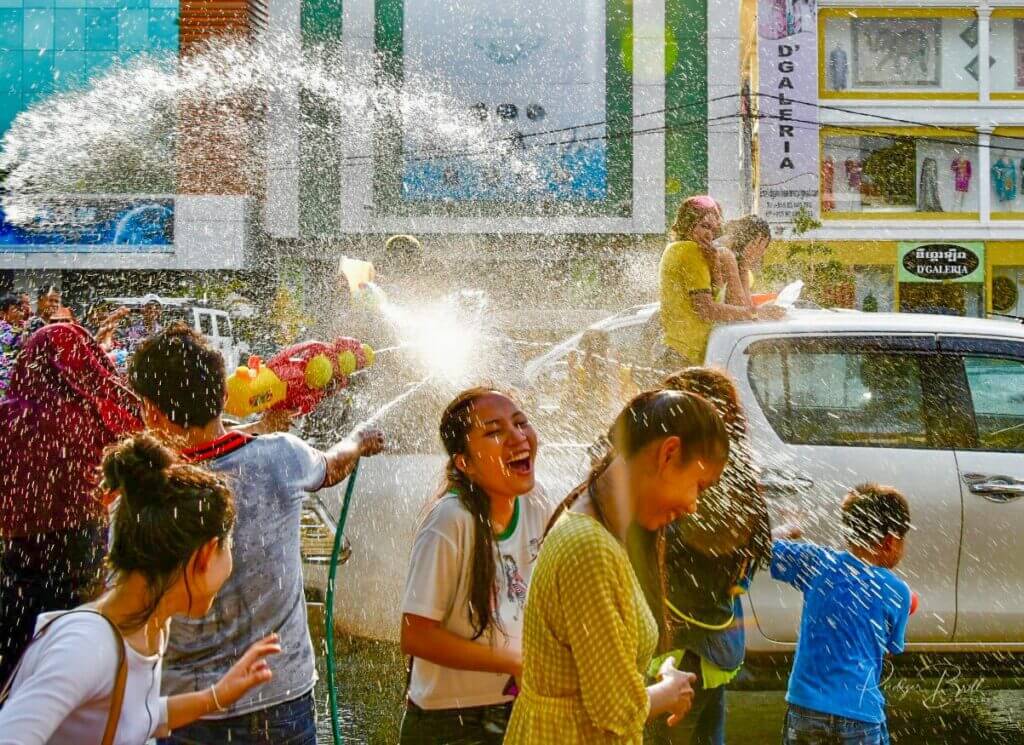
My favourite Angkor tour guide Mr. Ratanak has also stocked up on the necessary accessories for himself and his family: Water guns for the coming water battles during the holidays.
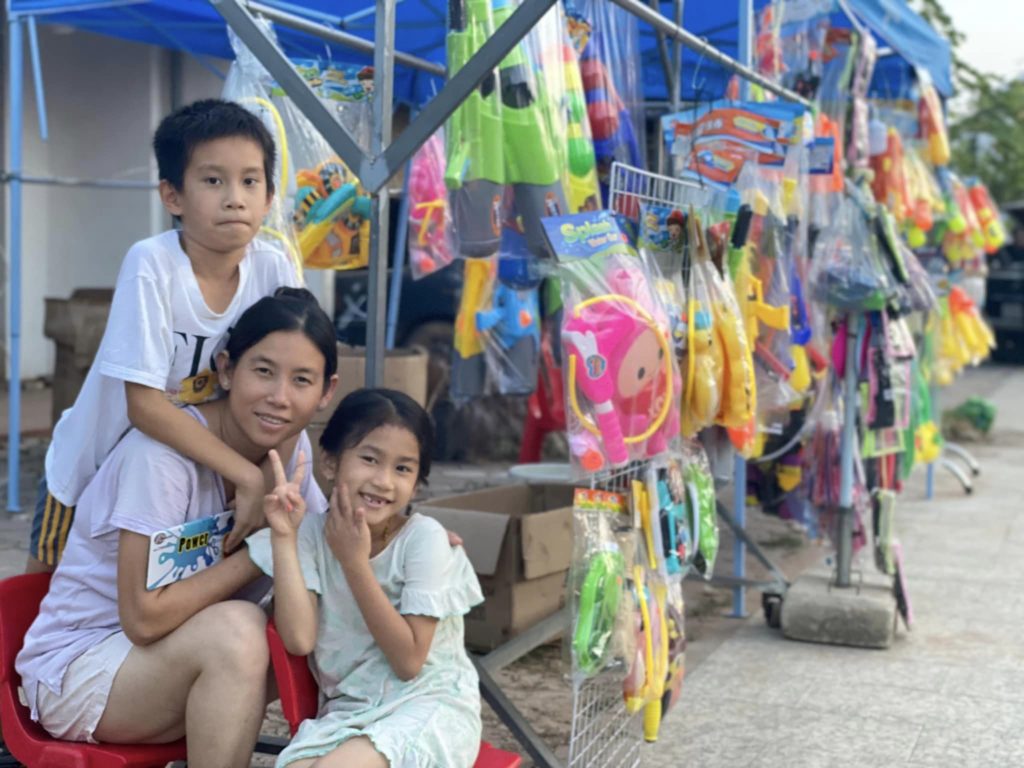
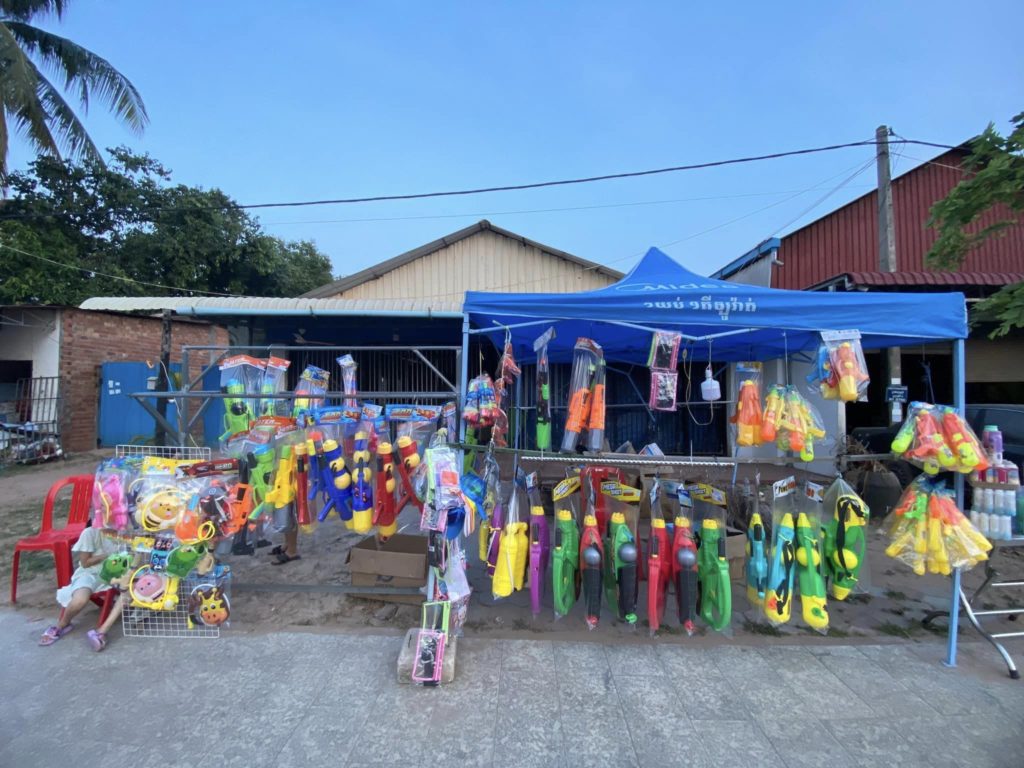
Let’s make it a happy and festive celebration! In this spirit, we wish you from the bottom of our hearts:
❤️🙏❤️ Sus’Dei Chnam Thmei – សួស្តីឆ្នាំថ្មី ❤️🙏❤️
Happy Khmer New Year!

Affiliate*
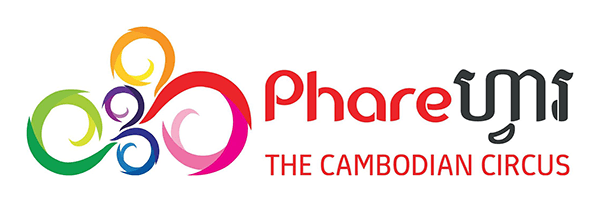
Phare, the Cambodian Circus
A highlight in Siem Reap! Buy tickets online directly on the Circus Phare website*.
Links and references with a * are an affiliate link (advertising link). If you like Visit Angkor and buy, book or subscribe to something via an affiliate link, the provider will make a small commission for Visit Angkor. Of course, there are no additional costs for you.
Join our Facebook group
International travel group with friendly people who love Cambodia. We speak English, German and a little Khmer.
By the way: We write here at Visit Angkor with a lot of passion and love. Nevertheless, it can happen that information is no longer up to date or perhaps even incorrect. We would be happy to hear from you so that we can update the information accordingly. Thank you very much!


